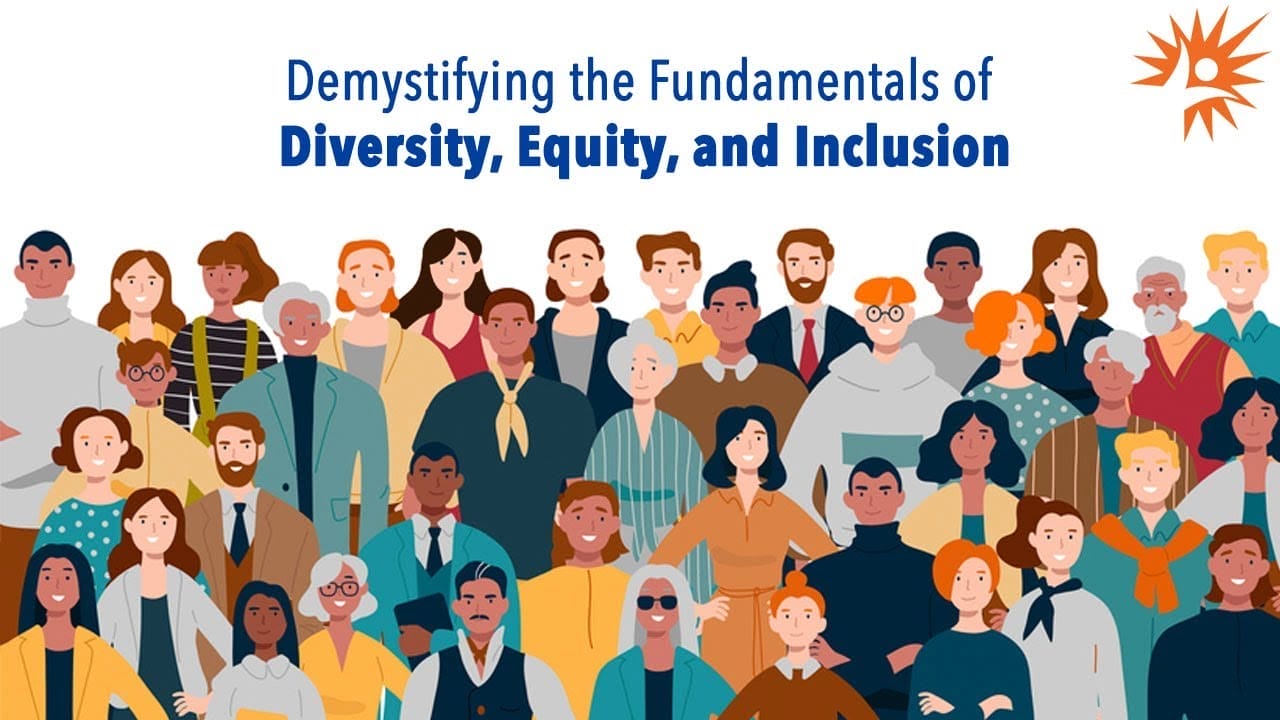Did you know that organizations with diverse workforces outperform their less diverse counterparts by 35%? Embracing diversity and promoting inclusion in the workplace not only fosters innovation and creativity but also drives business growth. To achieve a diverse and inclusive culture, organizations need to invest in effective diversity training programs.
In this article, we will explore the best practices for diversity training in the workplace. From incorporating long-term training programs to utilizing diverse trainer demographics, we will uncover the strategies that can help organizations create a positive and inclusive work environment.
Key Takeaways:
- Effective diversity training can lead to a 35% performance increase in organizations with diverse workforces.
- Diversity training is essential for fostering innovation, creativity, and business growth.
- This article will provide insights into best practices for diversity training in the workplace.
- By following these best practices, organizations can create a positive and inclusive work environment.
- Diversity training programs should reflect the diverse demographics of the workforce.
The Importance of Diversity Training
Diversity training plays a critical role in today’s workplace, addressing the need for organizations to foster inclusivity and embrace diversity. By implementing workplace diversity training programs, organizations can attract and retain diverse talent, comply with moral and legal standards, and develop leadership and essential skills. It serves as a platform to disseminate diversity-related information, promote diversity and inclusion, and maximize organizational diversity.
One of the key benefits of workplace diversity training is its ability to increase the inclusion of different identity groups within an organization. By providing employees with the knowledge and understanding of diverse cultures, backgrounds, and perspectives, diversity training helps create a more inclusive work environment. This inclusivity leads to better teamwork, collaboration, and innovation as individuals learn to appreciate and leverage their unique strengths and experiences.
“Diversity is being invited to the party; inclusion is being asked to dance.” – Verna Myers
Furthermore, diversity training helps organizations comply with legal and moral standards related to diversity and inclusion. By educating employees about the importance of treating all individuals fairly and equitably, organizations can prevent workplace discrimination, harassment, and bias. Diversity training also promotes a more respectful and harmonious work environment, fostering a culture of understanding and acceptance.
Through diversity training programs, organizations create opportunities for employees to develop essential skills and competencies needed in an increasingly diverse and globalized world. These skills include effective communication across cultures, empathy, and cultural intelligence, enabling employees to navigate complex and multicultural work environments with ease. In addition, diversity training helps employees build leadership attributes that embrace diversity as a strength, enabling them to lead diverse teams and drive organizational success.
Overall, workplace diversity training is of paramount importance for organizations looking to thrive in today’s diverse and interconnected business landscape. By embracing diversity and inclusion, organizations can create a positive work environment where individuals from all backgrounds feel valued, respected, and empowered. This leads to greater employee engagement, productivity, and creativity, ultimately driving organizational success.
Objectives of Diversity Training

Diversity training is designed to achieve several key objectives that promote a culture of inclusivity and understanding in the workplace. By implementing effective diversity training strategies, organizations can foster an environment where employees are equipped with the necessary skills and knowledge to navigate diverse work settings and interact respectfully with colleagues from different backgrounds.
The goals of diversity training are multi-fold. Firstly, diversity training strives to raise participants’ awareness about the various types of diversity present in the workplace. This includes recognizing and appreciating differences in race, ethnicity, gender, age, sexual orientation, disability, and more. By increasing awareness, employees can develop a broader understanding of the unique perspectives and experiences that each individual brings to the table.
Secondly, diversity training aims to cultivate an environment where individuals appreciate the differences among their co-workers. This involves fostering an atmosphere of respect, empathy, and open-mindedness. When employees learn to appreciate the diverse talents, skills, and backgrounds of their colleagues, they can work collaboratively, leveraging their collective strengths to achieve common goals.
Another objective of effective diversity training is to equip employees with the necessary knowledge and strategies to enhance their interpersonal and communication skills across diversity. Participants learn effective communication techniques that facilitate understanding and reduce misunderstandings or conflicts stemming from cultural or other differences.
Moreover, diversity training seeks to develop pro-diversity attitudes and behavioral intentions among participants. Encouraging inclusivity and equality is not only beneficial for individual employees but also for the organization as a whole. By fostering pro-diversity attitudes, organizations can create an environment that values diversity and embraces the perspectives and contributions of all team members.
Lastly, diversity training aims to improve participants’ understanding of diversity-related issues and organizational policies. Employees gain knowledge about the legal and ethical considerations surrounding diversity, including workplace discrimination and harassment prevention. This understanding helps them navigate potential challenges and contribute to the creation of a safe and inclusive work environment.
By achieving these objectives, organizations can enhance workplace diversity, promote positive employee relations, and establish a strong foundation for inclusive and equitable practices.
Research indicates that effective diversity training programs contribute to increased multicultural awareness, improved work attitudes, and enhanced organizational commitment among employees. (source)
To delve deeper into the objectives of diversity training and its impact on organizational culture and employee well-being, a study published by the National Center for Biotechnology Information provides valuable insights. Check out the article for more information.
Elements of Successful Diversity Training
Successful diversity training programs incorporate several critical elements that contribute to their effectiveness and impact. By implementing these key elements, organizations can ensure that their diversity training efforts are comprehensive and yield positive results.
Clearly Defined Objectives and Learning Outcomes
Effective diversity training starts with clearly defined objectives and learning outcomes. These provide a roadmap for the training program and help participants understand what they will gain from the experience. Well-defined objectives also enable organizations to measure the success of the training and evaluate its impact on participants and the organization as a whole.
Critical Acts of Understanding, Reflection, and Realization
A successful diversity training program goes beyond imparting knowledge; it encourages critical acts of understanding, reflection, and realization. This involves creating a safe and supportive learning environment where participants can explore their own biases, challenge assumptions, and gain a deeper understanding of different perspectives and experiences. It is through this process of self-reflection and realization that individuals can transform their attitudes and behaviors.
Well-Designed and Implemented Training Programs
The design and implementation of diversity training programs are crucial to their effectiveness. The training should be thoughtfully structured, incorporating a variety of instructional methods and activities to engage participants and accommodate different learning styles. It should also be delivered in a series of sessions to allow for ongoing learning and reinforcement of key concepts. A well-designed program considers the specific needs and context of the organization, ensuring that the training is relevant, practical, and impactful.
Skilled and Experienced Trainers
The success of diversity training programs heavily relies on the expertise and proficiency of the trainers. Skilled and experienced trainers possess the knowledge and facilitation skills necessary to create an inclusive and interactive learning environment. They are adept at managing group dynamics, facilitating discussions, and addressing sensitive topics with tact and sensitivity. Trainers with diverse backgrounds and perspectives bring added value to the training, allowing participants to benefit from a range of viewpoints.
Effective Pedagogical Techniques
Diversity training should utilize effective pedagogical techniques to enhance engagement and retention of learning. This includes incorporating interactive exercises, case studies, role plays, and group discussions to encourage active participation and application of knowledge. Visual aids, multimedia resources, and real-life examples can also be employed to illustrate key concepts and make the training more relatable and compelling.
“Successful diversity training programs incorporate clearly defined objectives, critical acts of understanding, well-designed programs, skilled trainers, and effective pedagogical techniques.”
Creating a safe and supportive learning environment that encourages exploration and dialogue is pivotal in successful diversity training. By incorporating these essential elements, organizations can foster a culture of inclusion and understanding, ultimately creating a workplace that thrives on diversity and promotes equitable practices.
The Training Design

When designing diversity training programs, it is crucial to consider the methodology and delivery format. The chosen methods should effectively engage participants and foster a deeper understanding of diversity. Two effective methods for diversity training include diversity settings with perspective-taking and diversity training with goal setting. These methods encourage participants to step out of their comfort zones and explore different perspectives.
In a diversity setting with perspective-taking, participants are exposed to diverse experiences and viewpoints. This approach helps individuals develop empathy and understanding towards others, fostering a more inclusive work environment. By experiencing different perspectives firsthand, participants can challenge their preconceived notions and biases.
Diversity training with goal setting allows participants to set personal diversity-related goals that align with their values and beliefs. By setting goals, participants become more actively engaged in their own learning and development. Goals can be related to increasing awareness, improving communication skills, or promoting diversity and inclusion within the organization.
Reflective learning is an integral part of effective diversity training. By creating opportunities for participants to reflect on their own experiences and beliefs, they can gain new insights and develop a deeper understanding of diversity-related issues. Reflective exercises can include journaling, small group discussions, or guided self-reflection activities.
Experiential learning opportunities should also be incorporated into diversity training programs. These opportunities allow participants to engage in hands-on activities that simulate real-world scenarios and challenges. Through experiential learning, participants can practice applying diversity skills in a safe and supportive environment while receiving feedback and guidance from trainers.
The success of diversity training also depends on the trainer’s experience, skills, and attitudes. Trainers should have a deep understanding of diversity issues and cultural competence. They should be skilled in creating an inclusive and engaging learning environment. Trainers who possess a positive and encouraging attitude can effectively facilitate discussions and foster a safe space for participants to share their thoughts and experiences.
By carefully designing diversity training programs, organizations can maximize their impact and create a supportive and inclusive work environment for all employees.
For more information on effective diversity training, you can refer to this resource.
Identifying the Need for Diversity Training
Effective workplace diversity training is essential for organizations to cultivate inclusivity and foster a supportive work environment. To identify the need for diversity training, organizations must reflect on their current work climate and address any diversity issues that exist within their teams. By addressing these issues head-on, organizations can promote a culture that values diversity and ensures the well-being of all individuals.
One crucial aspect of identifying the need for diversity training is to consider the specific groups that should be included in the training. This ensures that the training program caters to the unique needs and experiences of each group. By acknowledging and addressing these diverse perspectives, organizations can create a safe and inclusive space that promotes equality and respect.
It is also important to engage in meaningful discussions about the benefits of diversity training for all individuals in the organization. By highlighting the advantages of workplace diversity training, such as improved collaboration, communication, and productivity, organizations can garner support from employees at all levels.
Identifying and addressing diversity issues within an organization not only promotes inclusivity but also cultivates a more supportive work environment. By investing in diversity training best practices, organizations can empower their workforce to embrace diversity, foster equal opportunities, and create a workplace where everyone can thrive.
Benefits of Identifying the Need for Diversity Training
Identifying and addressing diversity issues can have a profound impact on the organization, leading to various benefits:
- Improved employee satisfaction and well-being
- Increase in productivity and creativity
- Enhanced collaboration and teamwork
- Reduction in workplace conflicts and discrimination
- Expanded understanding of different perspectives and experiences
By investing time and resources into workplace diversity training, organizations can create an environment where individuals feel valued, respected, and motivated to contribute their unique skills and perspectives. This not only benefits the organization but also promotes positive societal change.
Topics for Diversity Training

When designing diversity training programs, organizations should take into account the specific diversity issues present within their workplace. Diversity training topics can encompass a wide range of areas, including race, culture, gender, and generation. By addressing these particular topics, organizations can effectively tackle the diversity issues that impact their workforce.
Addressing Race and Culture
Race and culture are critical aspects of diversity that influence the dynamics within a workplace. Diversity training can focus on promoting understanding and respect for different racial and cultural backgrounds. By exploring topics such as cultural competency, unconscious bias, and multicultural communication, organizations can help employees develop the skills necessary for fostering a more inclusive environment.
Fostering Gender Inclusivity
Gender is another dimension of diversity that warrants careful consideration during diversity training. Topics such as gender equality, gender stereotypes, and inclusive language can be explored to raise awareness and promote inclusivity in the workplace. By addressing gender-based challenges and biases, organizations can create a more equitable and supportive environment for all employees.
Understanding Generational Differences
In today’s multi-generational workforce, it is essential to acknowledge and appreciate the diverse perspectives and work styles of different generations. Topics related to generational differences, intergenerational collaboration, and managing generational diversity can be incorporated into diversity training programs. This allows employees to navigate generational complexities, foster teamwork, and enhance productivity.
Exploring Intersectionality
The concept of intersectionality recognizes that individuals possess multiple identities that intersect to shape their experiences and perspectives. A comprehensive diversity training program may include topics that explore the intersectionality of different dimensions of diversity, such as race, gender, and sexual orientation. By understanding how these intersecting identities influence individuals’ lived experiences, organizations can promote a more inclusive work environment.
“Effective diversity training should address the specific diversity issues within an organization and empower individuals to embrace differences, challenge biases, and foster a more inclusive workplace culture.”
By tailoring diversity training topics to suit the unique needs of an organization, these training programs can effectively address diversity issues and promote a more inclusive work environment. Creating modules or focusing on specific topics allows organizations to provide targeted training that resonates with different employee groups, ensuring maximum impact and long-term change.
For more information and best practices in diversity training, you can refer to the best practices for effective diversity training guide provided by the UVU Library.
| Benefit | Key Topics |
|---|---|
| Promoting inclusivity | Race, culture, gender, generation |
| Addressing biases and stereotypes | Cultural competency, unconscious bias, gender equality |
| Enhancing teamwork and collaboration | Generational differences, intergenerational collaboration |
| Fostering understanding | Intersectionality, multiple identities |
By incorporating these topics into diversity training programs, organizations can lay the foundation for a more inclusive and harmonious workplace.
Available Resources on Diversity Training
Implementing effective diversity training programs can be facilitated by accessing a wide range of resources. These resources provide organizations with valuable information, best practices, and tailored training materials to meet their specific needs and objectives. Here are a few examples of diversity training resources:
- Books: Books written by experts in the field of diversity training offer in-depth knowledge and practical strategies to help organizations develop inclusive workplaces.
- Articles: Academic journals and reputable online publications provide research-based insights and up-to-date information on diversity training trends and practices.
- Online Courses: Online platforms offer self-paced and instructor-led courses that cover various aspects of diversity training, including cultural competence, unconscious bias, and inclusive leadership.
- Workshops: Participating in workshops led by diversity training experts allows organizations to gain practical skills, engage in interactive discussions, and learn from real-world case studies.
- Consulting Services: Diversity consultants provide personalized guidance and support in designing and implementing effective diversity training programs tailored to an organization’s unique needs.
By exploring and utilizing these diversity training resources, organizations can enhance their knowledge, discover innovative approaches, and develop comprehensive training programs that foster inclusion and promote diversity throughout their workforce.
Expanding the Knowledge Base: A Case Study
“We realized the importance of diversity training in our organization and wanted to implement an effective program. Through extensive research and using diversity training resources, we were able to design a comprehensive training curriculum that addressed the specific needs and challenges we faced. The articles and books we referred to provided valuable insights and strategies, while online courses and workshops helped our employees develop the necessary skills and awareness. Consulting services offered additional guidance and helped us fine-tune our program. Overall, the availability of diverse resources played a crucial role in our successful implementation of diversity training, enabling us to create a more inclusive and respectful workplace.”
Evaluating the Effectiveness of Diversity Training
Ensuring the effectiveness of diversity training programs is crucial in maximizing their impact and identifying areas for improvement. Organizations must employ various evaluation methods to assess the outcomes of workplace diversity training, allowing them to make informed decisions about program refinement and develop strategies for ongoing improvement.
One of the evaluation methods is conducting pre- and post-training assessments to measure the participants’ knowledge acquisition and skill development. These assessments provide valuable insights into the effectiveness of the training in enhancing diversity understanding and promoting inclusive behaviors in the workplace.
By evaluating the effectiveness of workplace diversity training, organizations can make data-driven decisions to refine their programs and develop strategies for continuous improvement.
– John Adams, Diversity Training Consultant
Surveys can also be utilized to gather feedback from participants, obtaining their perspectives on the training experience, trainers’ effectiveness, and the applicability of the acquired knowledge in their work. This qualitative feedback complements the quantitative assessment results and provides valuable insights into the participants’ perceptions of the training’s effectiveness.
In addition to assessments and surveys, organizations can also conduct observations to evaluate the application of diversity knowledge and skills in real work situations. Supervisors or designated observers can assess how well employees apply the concepts learned during the training and identify areas where further support or training may be necessary.
Incorporating feedback from participants is an essential aspect of evaluating diversity training effectiveness. Organizations can gather feedback through focus groups or individual interviews, allowing participants to share their experiences, suggestions, and areas of improvement for the training program. This valuable feedback helps organizations refine training content, delivery methods, and overall effectiveness.
Evaluation data collected from these methods allow organizations to identify strengths and weaknesses in their diversity training programs. By identifying areas for improvement, organizations can adjust their training approaches, resources, or content to enhance the overall effectiveness of workplace diversity training.
Ultimately, evaluating the effectiveness of diversity training is crucial for organizations to continuously enhance their programs, ensure optimal learning outcomes for participants, and foster an inclusive work environment.
| Evaluation Methods | Advantages | Disadvantages |
|---|---|---|
| Pre- and post-training assessments | – Measure knowledge acquisition and skill development – Quantitative data for evaluation |
– May not capture behavioral changes effectively |
| Surveys | – Gather qualitative feedback from participants – Capture perceptions of training effectiveness |
– Limited to participants’ self-reporting |
| Observations | – Assess application of diverse knowledge and skills in real work situations – Provide firsthand insights into training impact |
– Time-consuming and may not capture all relevant aspects |
| Feedback from participants | – Capture subjective experiences and suggestions – Identify areas for improvement |
– May be influenced by individual bias |
Conclusion
Diversity training is a vital aspect of creating an inclusive and understanding workplace. By implementing diversity training best practices, organizations can maximize its effectiveness and reap the benefits of a diverse workforce. One key best practice is reflecting diversity throughout the organization, ensuring that employees from all backgrounds are represented at all levels. This creates a sense of belonging and fosters an inclusive culture where everyone’s perspectives are valued.
Another best practice is incorporating long-term training programs that go beyond one-time workshops. Continuous learning and reinforcement help embed diversity principles into everyday practices. Organizations should also consider using diverse trainer demographics to provide different perspectives and experiences during the training. This approach enhances the learning experience and showcases the value of diversity in action.
By promoting workplace diversity training, organizations can foster a positive work environment where everyone thrives. This contributes to increased employee satisfaction, improved teamwork, and better decision-making. Embracing diversity and inclusion is not just the right thing to do; it also brings measurable business benefits. Organizations that prioritize diversity training are better equipped to attract and retain top talent, drive innovation, and cultivate a culture of acceptance and respect.
FAQ
What is diversity training?
Diversity training is designed to develop skills needed for working and interacting with people from diverse cultural backgrounds. It aims to create a positive work environment, prevent civil rights violations, and promote better teamwork.
Why is diversity training important for workplaces?
Diversity training is essential for organizations to attract talent, comply with moral and legal standards, develop leadership and necessary skills, disseminate diversity-related information, and maximize organizational diversity. It plays a crucial role in increasing the inclusion of different identity groups, fostering better teamwork, and creating a more inclusive work environment.
What are the objectives of diversity training?
The objectives of diversity training are to raise participants’ awareness about different types of diversity, appreciate differences among co-workers, and provide knowledge and strategies to enhance employees’ interpersonal and communication skills across diversity. The training aims to develop pro-diversity attitudes and behavioral intentions and improve participants’ understanding of diversity-related issues and organizational policies.
What are the elements of successful diversity training?
Successful diversity training incorporates several critical elements, including clearly defined objectives and learning outcomes, critical acts of understanding, reflection, and realization, well-designed and implemented training programs, and skilled and experienced trainers. The training should also utilize effective pedagogical techniques, create a safe and supportive learning environment, and encourage learners to explore different perspectives and experiences.
How should diversity training be designed?
The design of diversity training programs should consider the methodology and delivery format. Effective methods include diversity settings with perspective-taking and diversity training with goal setting. The training should encourage participants to step out of their comfort zones, facilitate reflective learning, and provide experiential learning opportunities. The trainer’s experience, skills, and attitudes also play a crucial role in the success of diversity training.
How can organizations identify the need for diversity training?
To identify the need for diversity training, organizations should reflect on the current work climate and diversity issues within the organization. It is important to consider the specific groups that should be included in the training and discuss the benefits of diversity training for all individuals in the organization. Identifying and addressing diversity issues can help create a more inclusive and supportive work environment.
What topics can be covered in diversity training?
When planning diversity training, it is essential to consider the specific diversity issues that exist within the organization. Topics for diversity training can range from race and culture to gender and generation. It is recommended to create modules or focus on specific topics to address the diversity issues effectively and provide targeted training for different groups within the organization.
What resources are available for diversity training?
Several resources are available to support organizations in implementing effective diversity training programs. These resources can include books, articles, online courses, workshops, and consulting services. Organizations can access these resources to gather information, learn about best practices, and develop customized training programs that suit their specific needs and objectives.
How can the effectiveness of diversity training be evaluated?
It is important to evaluate the effectiveness of diversity training programs to ensure their impact and identify areas for improvement. Evaluation methods may include pre- and post-training assessments, surveys, observations, and feedback from participants. By evaluating the effectiveness of diversity training, organizations can make informed decisions about program refinement and develop strategies for ongoing improvement.
How does diversity training contribute to the workplace?
Diversity training is a crucial component of creating an inclusive and understanding workplace. By following best practices such as reflecting diversity throughout the organization, incorporating long-term training programs, and using diverse trainer demographics, organizations can maximize the effectiveness of diversity training. By promoting diversity and inclusion, organizations can foster a positive work environment where everyone thrives.





